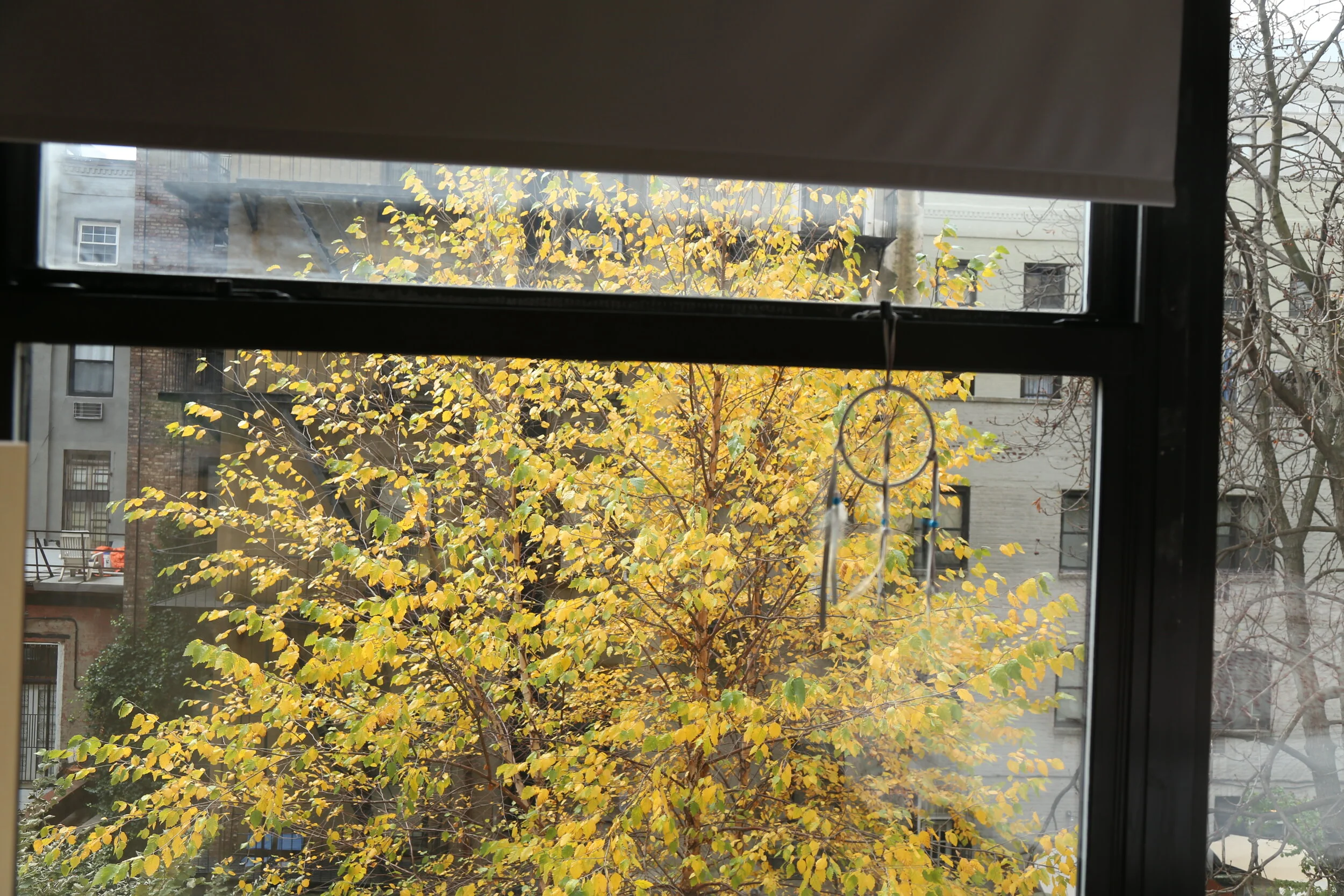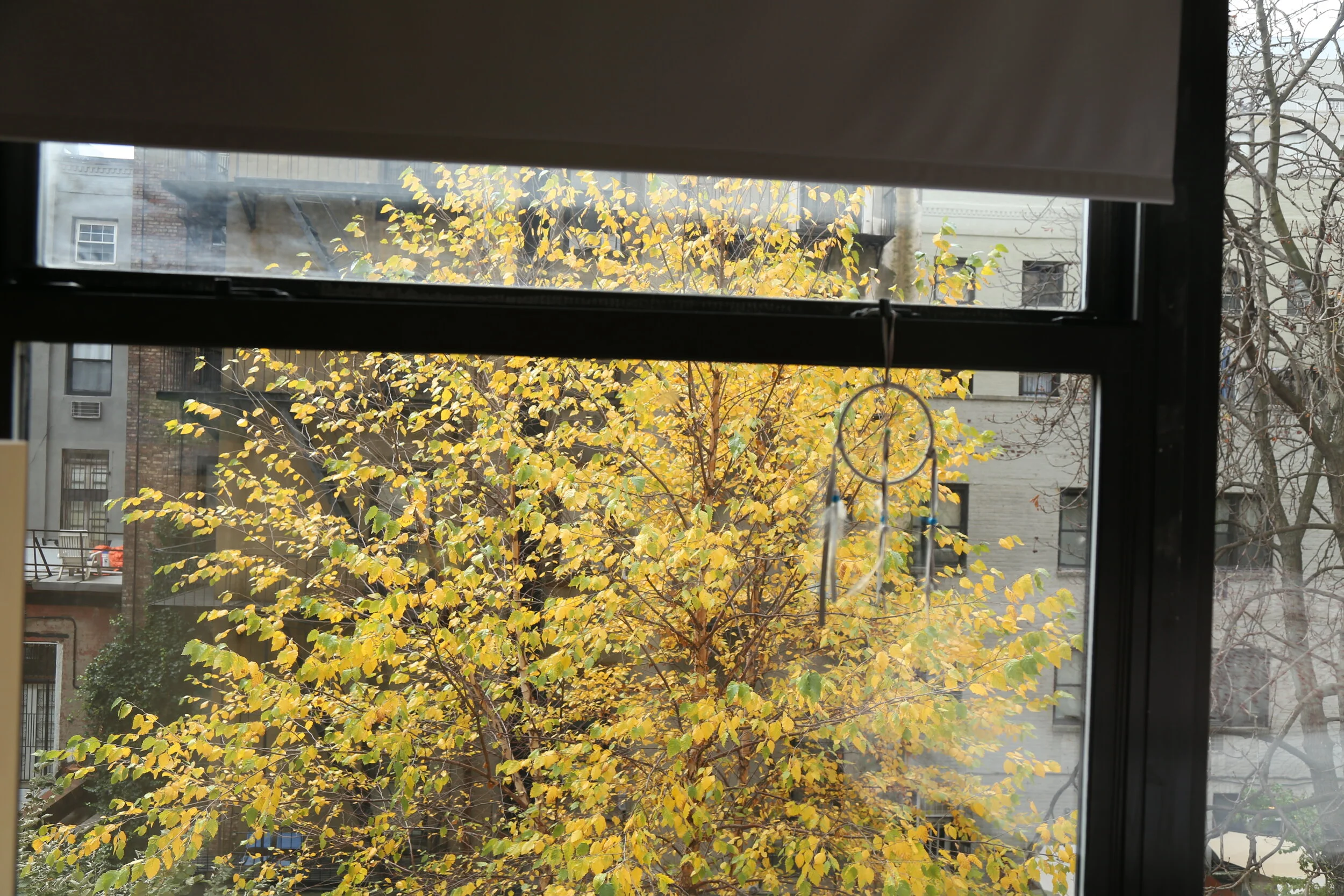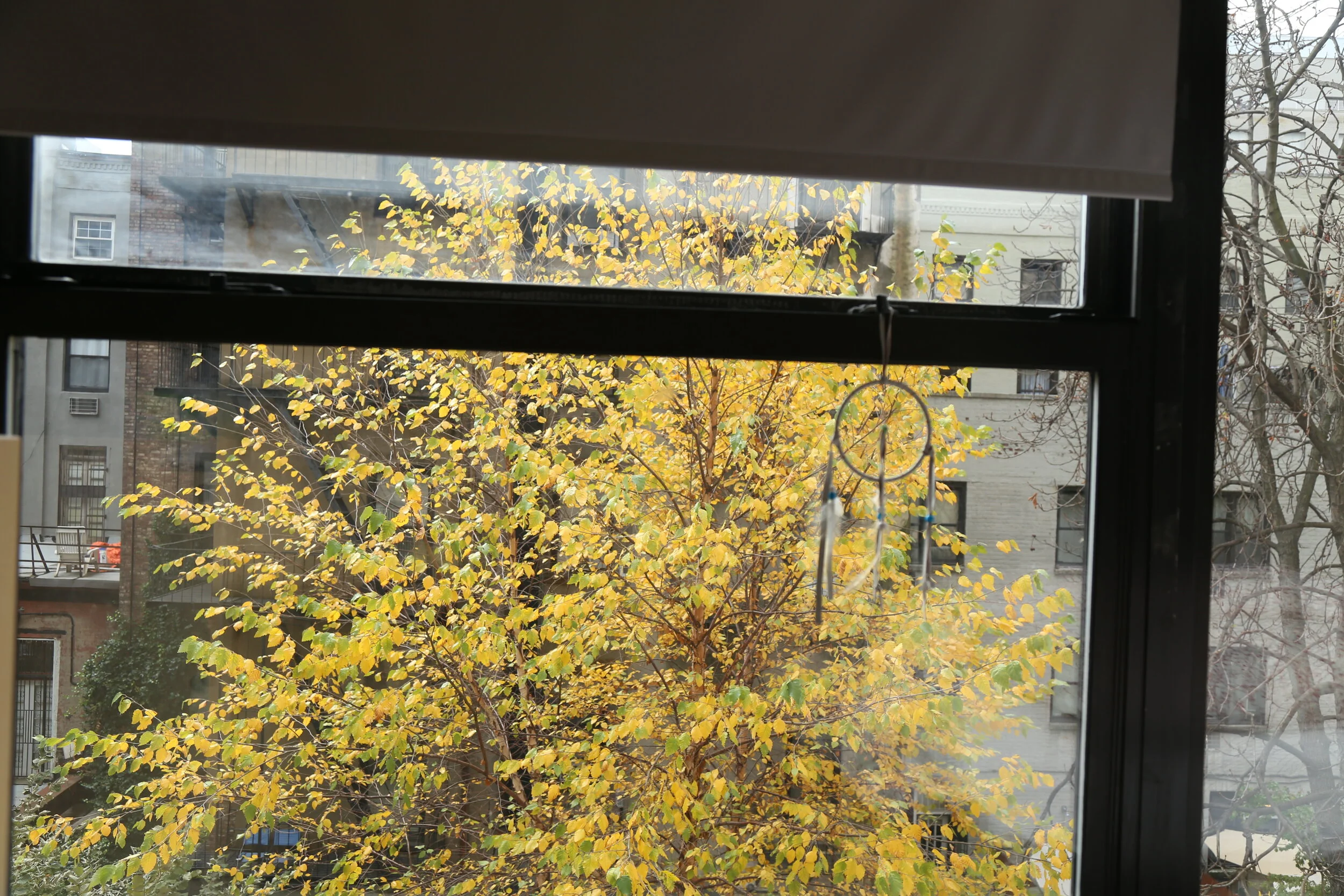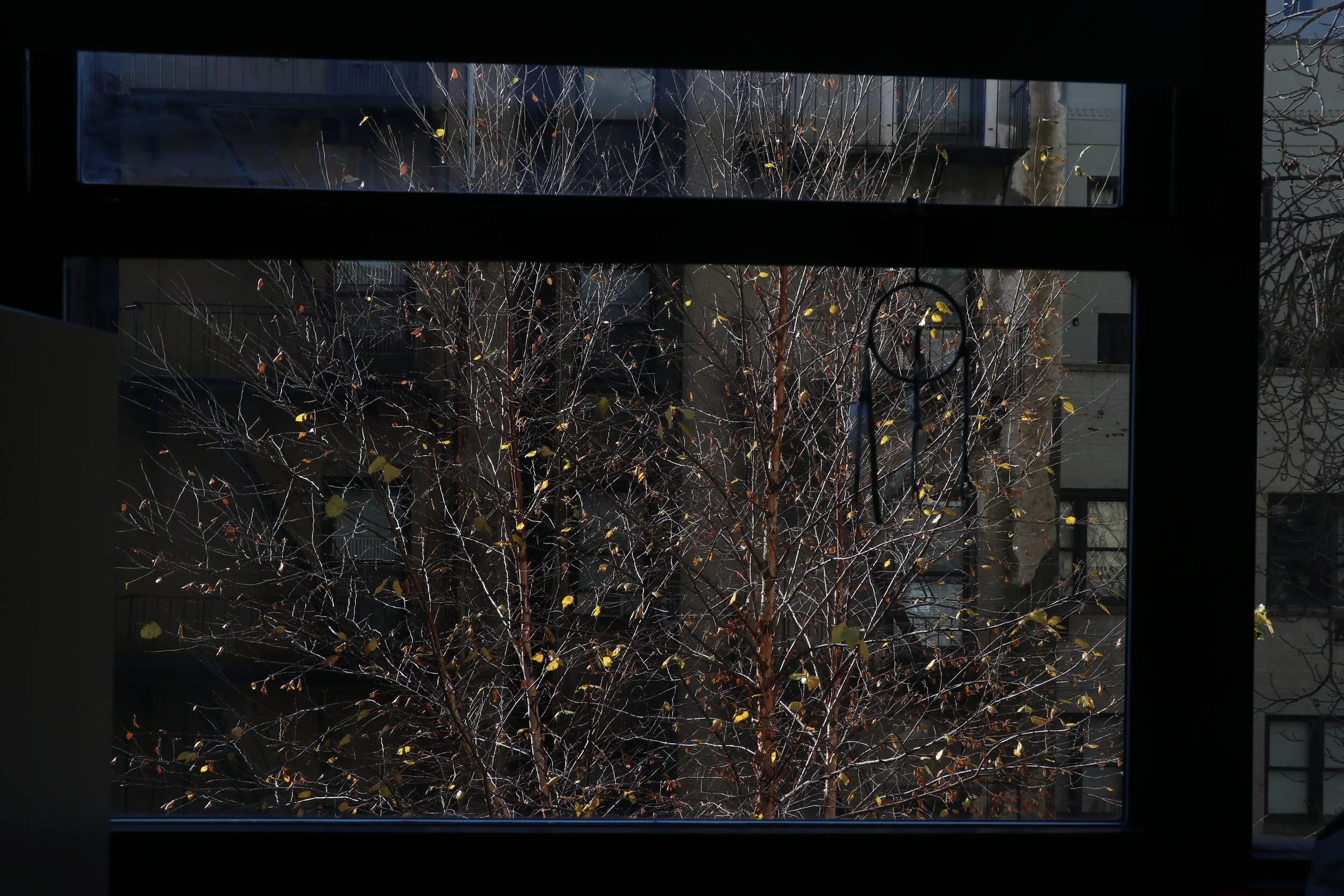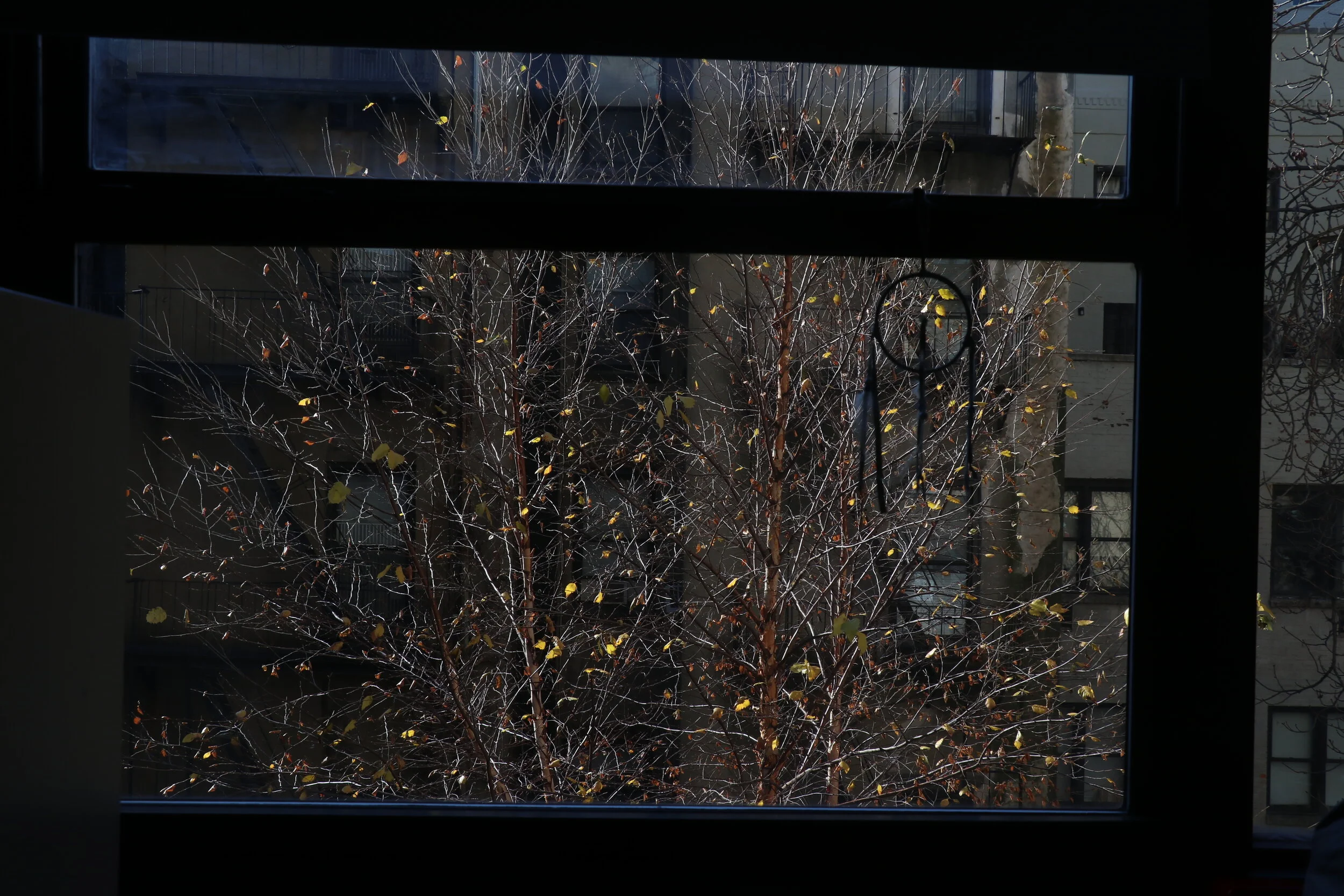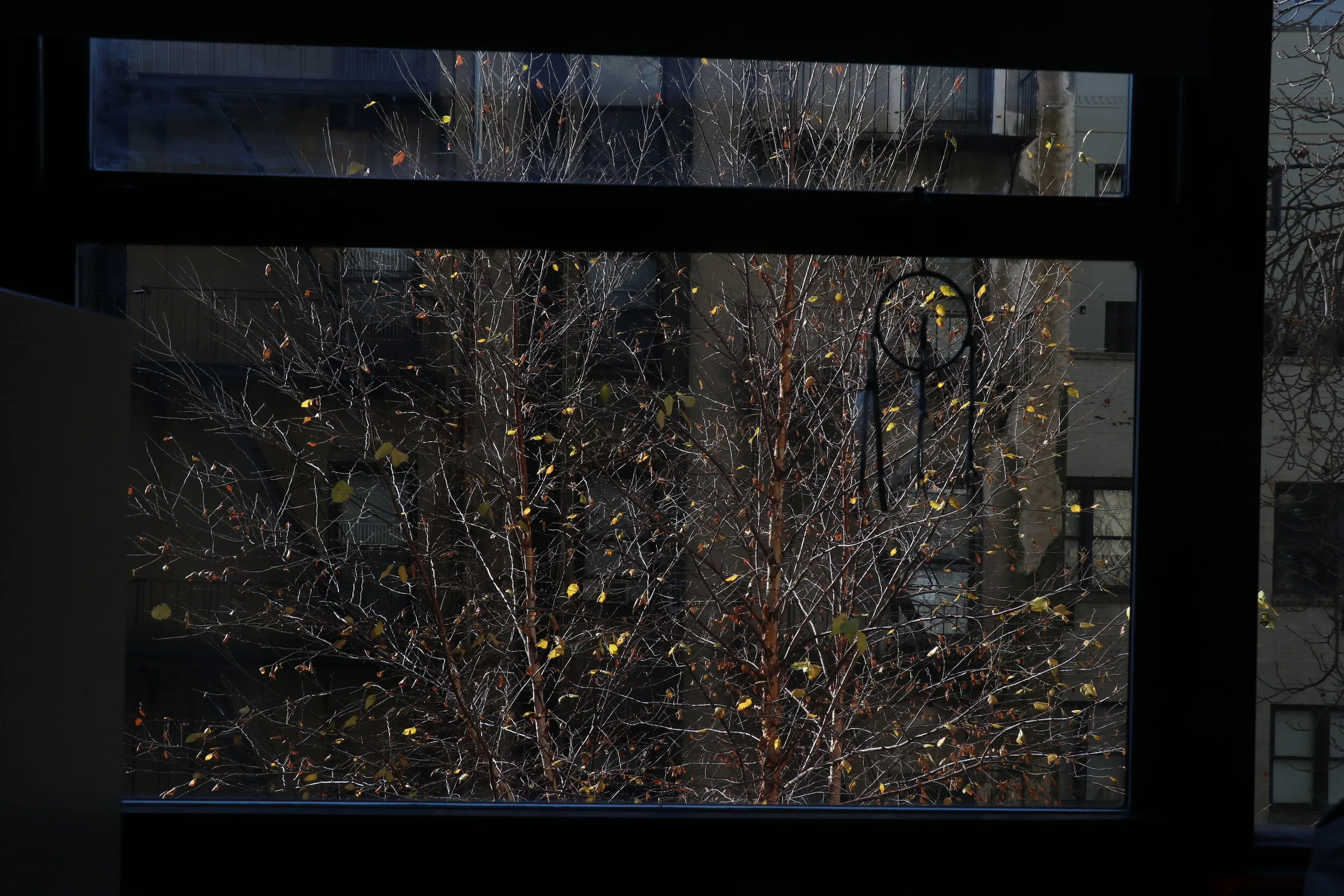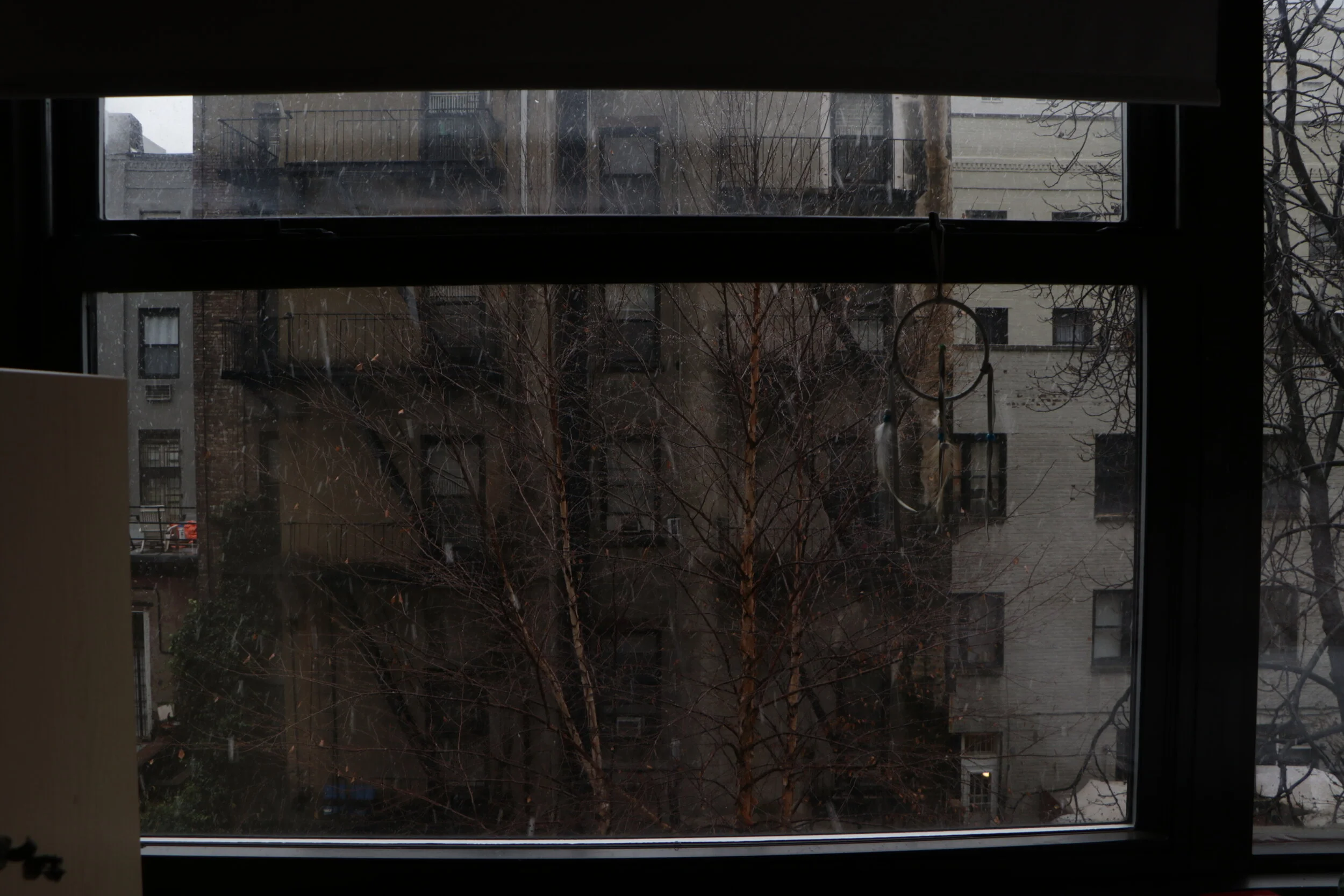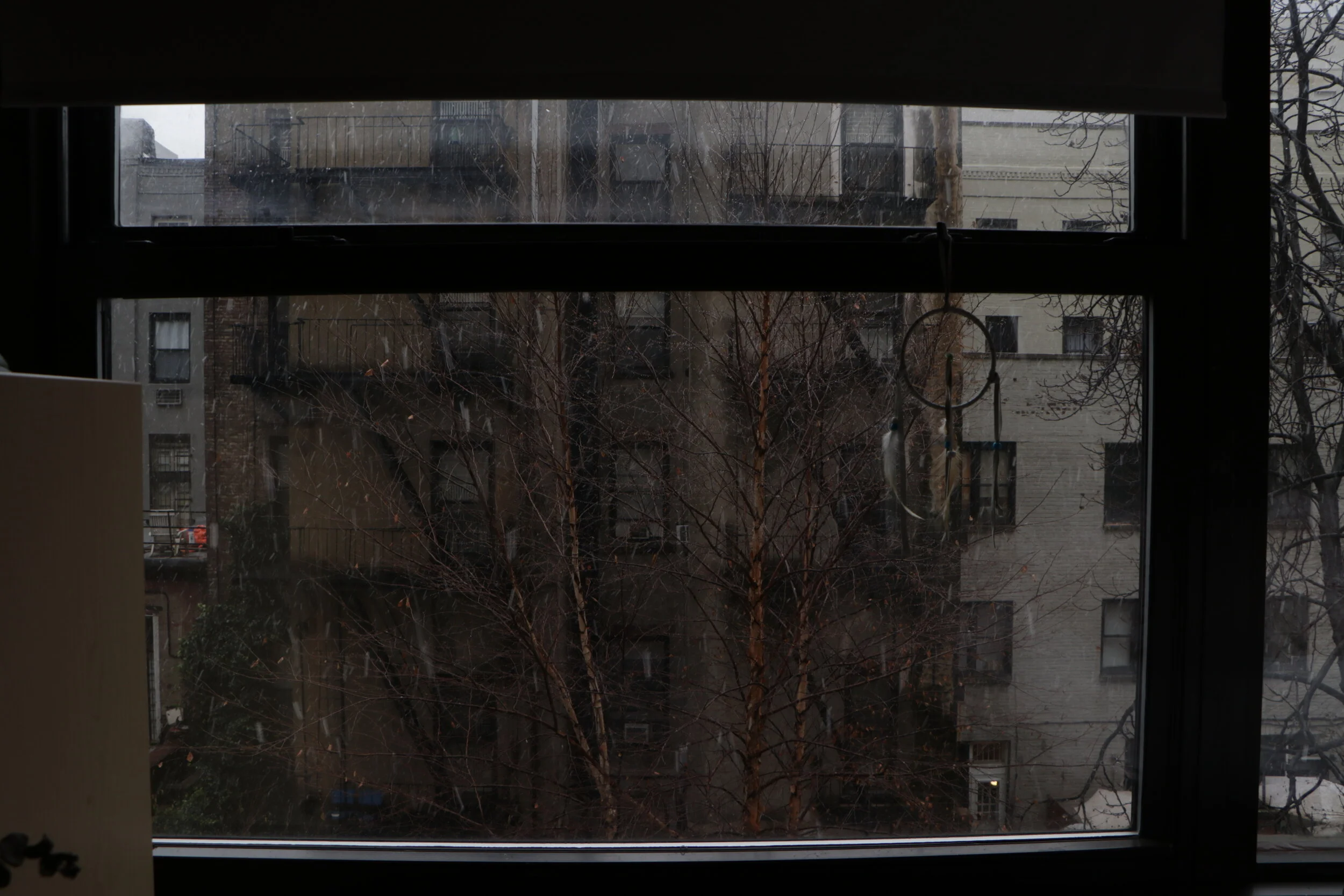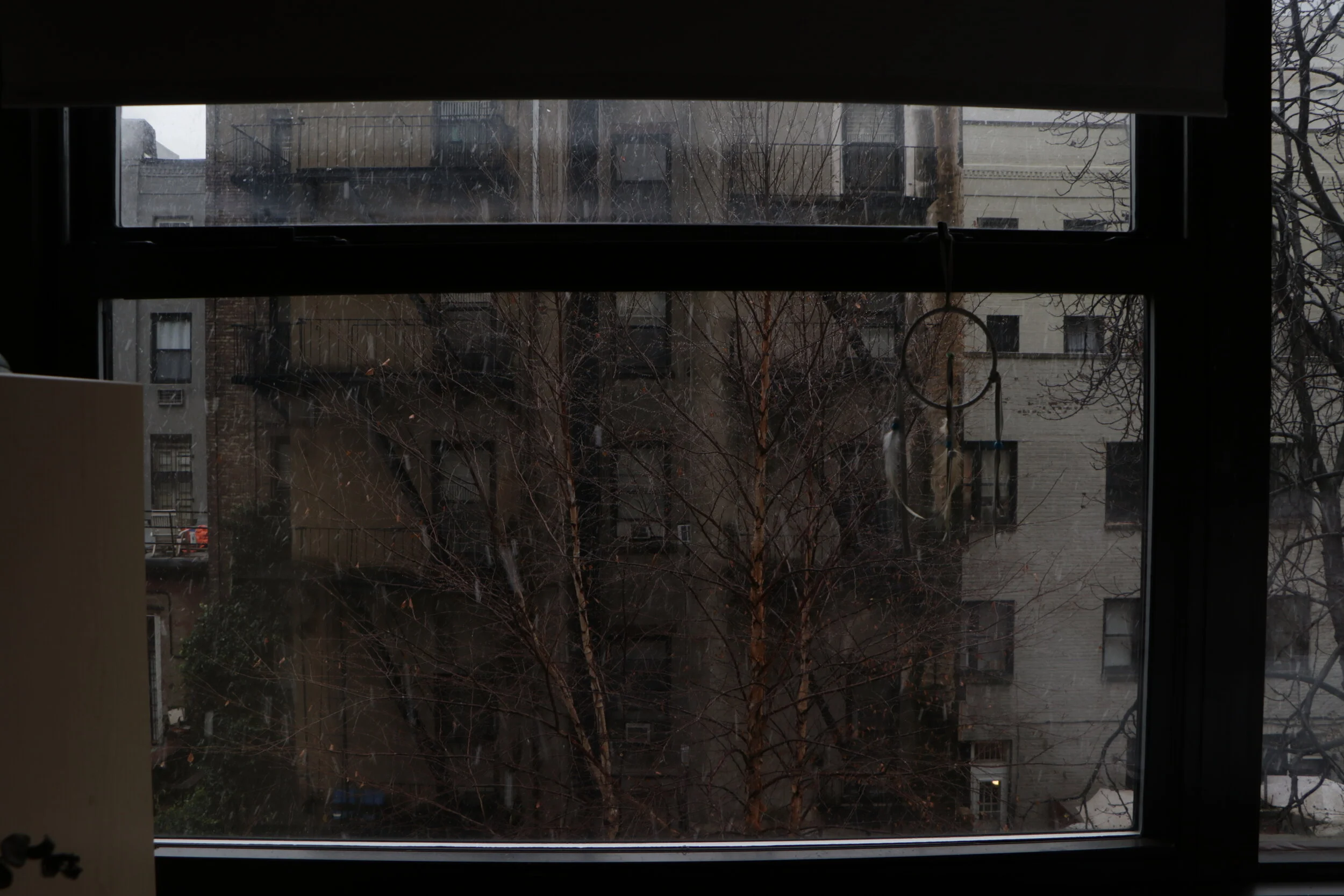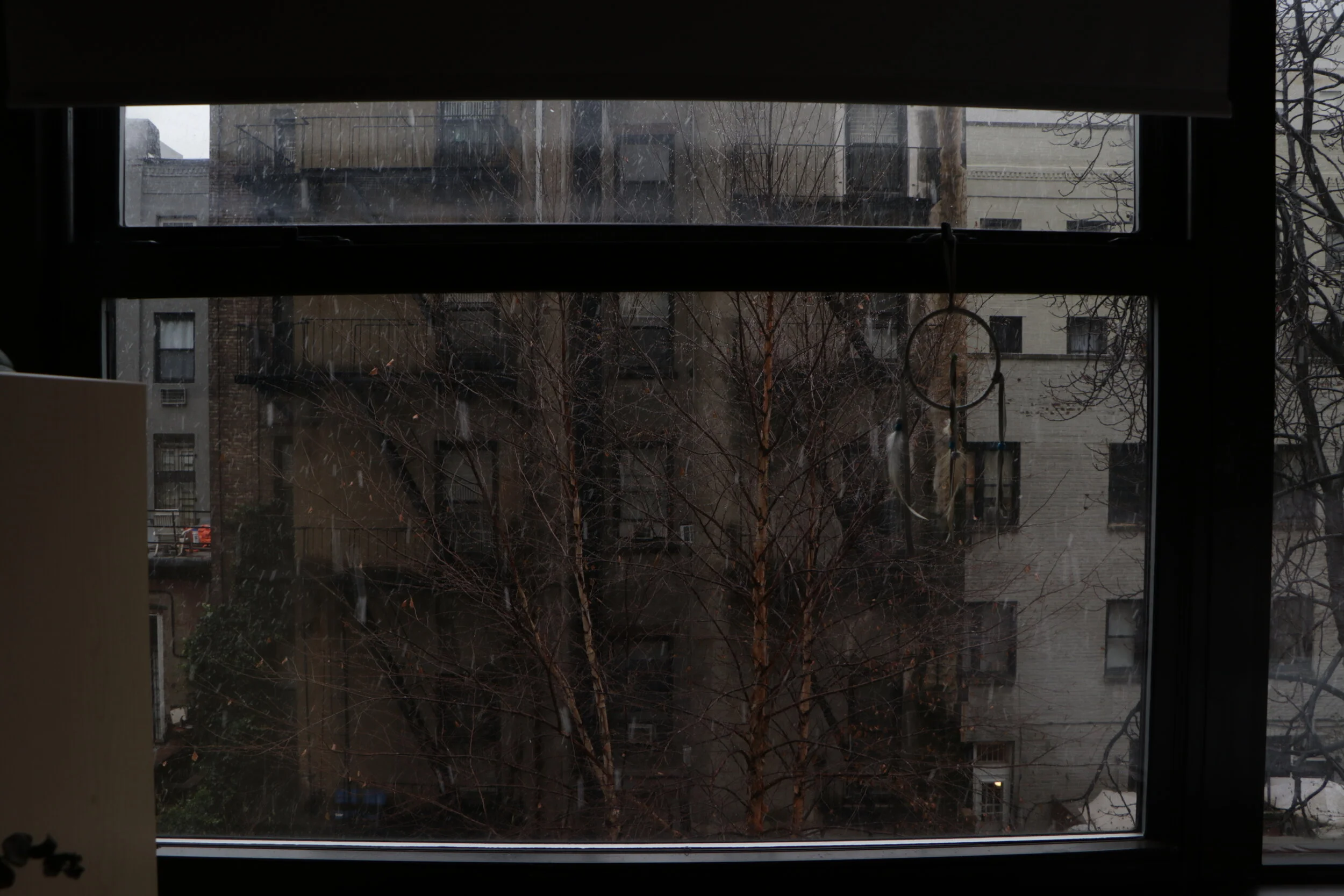Intimacy & Performance, 2019
triptych of videos
Intimacy & Performance is the visual representation of an essay I wrote in my seminar course, in which I explore the relationship between intimacy and performance in fine art. How does an artist represent intimacy? How does an artist interrogate intimacy? Can intimacy be represented? I focus my attention, more specifically, on how the subjective experience of intimacy is manifested differently across media. How does the representation of intimacy differ depending on the art form? Where is intimacy present in a static visual piece like a painting? This visual piece was created in tandem with the seminar essay. In my essay, I make the argument whereby artists create intimacy as they perform, and conversely, perform as they experience intimacy. Thus, intimacy is performance.
In the very first stages of this project, I planned to focus solely on intimacy as represented in fine art, since this is what I had explored in my Seminar bridge 3 essay about a work from Anni Albers and one from Lucas Arruda. However, after viewing a documentary on the "grandmother" of performance art, Marina Abramovic, I was at once unsettled and inspired. I thought : what about performance art? How is intimacy translated in performance art which is by nature, made to be public? Can performance art be intimate? Thus, I decided to shift my idea to explore intimacy as it is related to performance art. But I did not want to limit myself to analyzing only the conceptual work of Abramovic. I thought of the performative aspect of dance which is also technically "performance art" although not what we may imagine it to be. Being a dancer myself, I had the background and knowledge to begin to explore the idea of closeness in dance, through this piece. Seeking inspiration in the works of legends such as Martha Graham, I attempted to translate the feeling of closeness in a tangible way.
In my thinking process, I then turned to artists such as Jackson Pollock, who fathered the method of painting as a performance. In his case, the performance is not the final piece - as it is for the works of Duncan or Abramovic - but rather, the performance is the creative process. It is behind the scenes, hidden and unknown to the public, which makes it personal. Here, intimacy is conveyed in the way the piece is made; thus, the viewer can only imagine what the performance is like. Layers of intimacy are consequently added as the viewer creates his own experience of intimacy as he observes the painting, an experience which is contrasted by the artist's experience of intimacy with his work.
Lastly, I became very intrigued and inspired by the work of Agnes Denes, an artist who refused being labelled. Her work is embedded in themes of ecology, awareness, humanity, nature, and concepts. She is deeply engaged with improving the human species as it faces the perils of climate change; she attempts to answer the question of what it means to be a human in this world. Her piece Rice/Tree/Burial Ground particularly stuck with me as it is at once an intimate gesture and a grand statement. And while she does not refer to herself as a performance artist, I would argue that many of her works are in fact performances - performances that unfold and come to life through time. They are not conventional performances such as the ones created by Martha Graham or Marina Abramovic - which may involve a stage, an audience, and costumes. They are performances of nature, ignited by Denes' brilliant conceptual mind. In the aforementioned piece, Denes performs the intimate acts of planting a seed and burying a poem in a public context. So once again, I ask : how is intimacy translated in performance art?
These three pieces are tied together not only by the ideas they explore - the personal, the intimate, the private - but also by the way they are presented through film. By choosing video as the means of representation for my piece, I am questioning the existence of performance art and its place in time. Performance is meant to be seen live; it is an experience. Placing it within the confines of a two dimensional space, I wonder, is this still the same piece? How does it change its meaning? How does it change the way the viewer encounters the piece? On the flip side, photography and video allow me to encapsulate - quite literally - this idea of intimacy. By scaling down the piece and presenting it in a way that I can physically hold the piece, I am able to conserve the experience of intimacy. It is my performance, my painting, my piece and I am keeping it with me through this medium. Instead of letting the piece live in a transcendental space - where it can evaporate as it is being realized - I contain the intimate encounter. It becomes precious, like a memory I can hold onto forever. Finally, the execution of these three pieces was an experience of intimacy itself since I was bringing them to life alone in my own space.
As I developed the three pieces, the aesthetic of my piece evolved. Initially, I planned to record all three scenes with the same device, to capture this vintage/analog camera aesthetic. I wanted the image to be slightly blurred with subdued colors to create the warm atmosphere typically associated with intimacy. Since I did not have an analog camera or access to one, I used a VHS camera application that changed the visuals of the video directly on my phone camera. I ended up using it only for dance piece, because it did not fit with the other parts. For this section, I recorded myself improvising to one of Martha Graham's seminal pieces. I was dressed in a simple long dress and used a long sheet in my performance to capture Martha's style - these are reminiscent of the long skirts she and her dancers would often wear when dancing. I did not want to choreograph the piece beforehand, because I wanted to let the music dictate my movements. It is much like if I were dancing alone in my bedroom away from any peering eyes - that is a pure experience of intimacy. Additionally, this choice contributed to the more laid-back and rustic feel of the video, again chosen to depict a more genuine and authentic experience, something that is not so staged.
For the piece inspired by Agnes Denes, I first experimented taking videos of various still life of plants and leaves to show that nature too could perform. My intention was to re-enact a performance where time was the performer - the catalyst to the performance. I tried using the same VHS camera application that I used for the dance, but I was not convinced as the results were quite one-note and did not effectively capture the idea of an intimate performance. As such, I chose to use digital photography to create a type of film that is similar in appearance to stop motion. I photographed a tree outside my bedroom window, first with the tree full of leaves in daylight, then with the tree almost bare in a dark moody lighting, and finally during a snowfall. I realized if you flipped quickly through the static images, you could discern movement in the leaves. It looked like the tree was dancing - or performing. Here, nature's performance is not only the sway of the leaves as they respond to wind, but equally the change that the tree undergoes as time passe and it loses its leaves. In my essay, I write about several of Denes' pieces that involve letting organic material grow, thereby transforming time into the ultimate performer. The intimacy is portrayed here through the framing of the tree by my window. This acts as a container, a vessel through which I can have an intimate encounter with something that is otherwise open to anyone. The fact that the pictures were taken from my bedroom emphasizes the aspect of physical proximity that is often correlated to intimacy. Lastly, I chose to leave my pictures unedited, in order to tie with the handmade and "rustic" quality of the dance video. This is to say that I intentionally did not want these to be clear-cut and perfect.
The painting section was inspired by Jackson Pollock, the father of "action painting". Again, I wanted to capture this feeling of intimacy through the lens of a closed space - literally. I imitated the sharp and broad movements he makes as he swiftly moves around his painting, performing as he goes. I was also very inspired by an artist named Heather Day who, similar to Pollock, creates abstract works on large scales. On her website, there is a video showing how she works, and upon watching it I was immediately reminded of Pollock. She lays her canvas or paper on the floor and has to move over and around it to place her chosen material. In this way, she is also performing - she is having a dynamic interaction with her medium, splashing, pouring, and rubbing. Lastly, the "Action Painting" gallery at the newly renovated MoMA provided additional inspiration for this section of my piece. Immediately as I walked into the room, I fell in love. It was all abstract expressionism - a style which I am very fond of - and I was particularly attracted to the works Helen Frankenthaler and Pat Passlof. They used a similar language than that of Heather Day and Jackson Pollock. Further, I read that Frankenthaler and Pollock left their canvases unprimed, in order to let the material they put on it be soaked in the canvas rather than lay on top. I thought this was a interesting idea - having the material and canvas become one and the same - and thus borrowed this technique for my piece. This was my attempt at representing performance through process, and intimacy in the conversation between the artist and his medium.
This project also brings to light three disciplines and themes that I admire: painting - or more broadly the fine arts - dance, and nature. I have always been attracted to abstract expressionism, simply for its visual beauty, and also because it reflects my own tendency towards abstraction in the way I act, write, and think. As for dance, I have been doing it since I could walk - I always have and always will be a dancer, and that informs much of my work -even if the piece does not involve motion. Nature, on the other hand, continues to awe me everyday; I find myself drawn to it wherever I go. I need connection to nature in order to feel grounded and sane, and that is partly why I was so impressed by Agnes Denes' work. She absolutely reveres nature and places it at the foreground of all her work in order to bring awareness towards issues about the environment. She wants people to realize and become conscious of the preciousness - and therefore ephemerality - of nature.
I decided to show the three videos at the same time, in order to reinforce the multisensory aspect already present in each piece. I purposefully wanted the sounds to blend, and observe how they played off one another, existing in the same space, and collaborating despite their differences. Should I have the opportunity to show this piece again, I would project the 3 videos on the walls of a large room or gallery space and have the sound heard in speakers above, so that when people walk in and around, they would be more completely immersed in a separate world where their sense would tingle.
Lastly, this project - which was the final for my studio 2 course in my second semester of college - allowed me to step out of my comfort zone by using time based media, which is not something I usually turn to. I felt it was important for me to explore new mediums and try different things. I had, not long before, learned to use time based media in my "Time" class, so using it for this piece would represent a nice culmination of my work throughout the semester.
Through these videos, I wanted to emphasize not just the relationship but the struggle between what is private - and intimate - and what is public. How can performance be an act of intimacy and how can it help you deal with personal struggles? In all of my work, there is an element of fluidity and movement, most likely stemming from my foundation as a dancer. I always aim to capture a feeling, mood, or ambiance in my work, rather than content myself with just making something visual. Concepts are crucial to how I work, essentially forming the pillars of each project. Through this project - I have translated words into visual form, similar to how, in my writing I translate indescribable feelings into words. In short, this work continues the line that begins with the idea born in my mind.
The pictures below are part of the third video I created, the piece inspired by Agnes Denes for which I wanted to portray the idea of time being the performer. The last series of pictures is the tree after snow has passed while the middle series is the tree as it is transitioning from fall to winter, slowly losing its leaves. (click right on the picture to view the slideshow)
***
The video below is the final version of the first part of this project.
The video below is my interpretation of performance as it appears in the creative process. I was inspired by Jackson Pollock’s action painting style as well as the montage of Heather Day’s process video featured on her website.
The final video is my intimate encounter with dance inspired by the Graham modern technique. Using the music by William Schuman from Martha Graham’s piece entitled Night Journey, I simply let my body move and flow how it felt it should. I recorded myself using a VHS camera application to achieve that vintage home-video style reminiscent of 90s videos. This aesthetic choice served to capture the unfinished and authentic quality inherent to intimate experiences, as well as to portray performance in an usual way.


